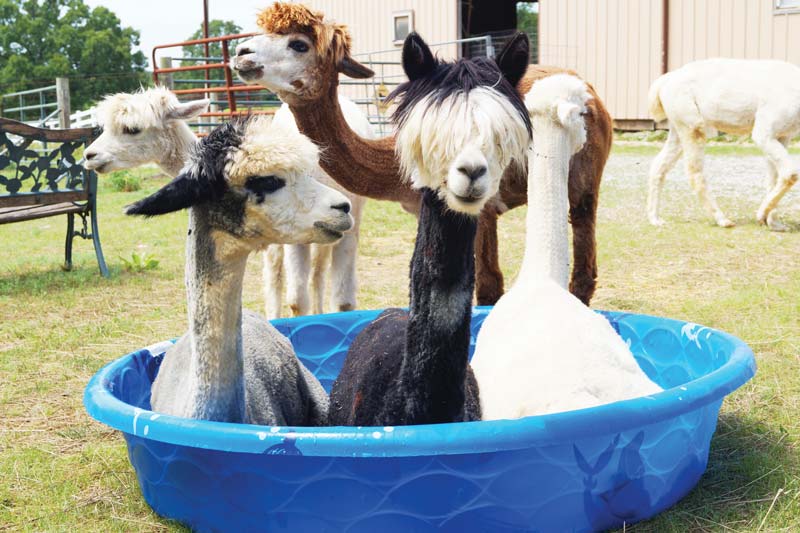In 1994, there weren’t any books—at least none in English—on the subject of alpacas, but that didn’t deter Liz Mitchko from leaving her management job at a Corvette parts store in Texas for a different kind of management opportunity. She and her parents launched Whirlwind Ranch near Lebanon, Missouri, and began their self-education on alpaca husbandry.
Now, 24 years later, Liz is an authority on alpacas.
“They are unique animals,” Liz says. “They first came to the US in 1984, so they are a relatively new animal to the states.”
Liz began her operation with just a few alpacas, and for good reason. Alpacas were $20,000 to $30,000 each during those early years, according to Liz, and the females only have one offspring, called a cria, each year. From those small beginnings, Liz built a herd that, at its largest, numbered 142. These days, she’s maintaining the herd at a more manageable 13.
Alpacas are popular for their fleece. Whirlwind Ranch has a shop on-site where it sells roving, which is fiber that has been prepared for spinning, plus yarn and completed products such as rugs, blankets, and scarves. Liz’s mom, Linda Mitchko, makes quilts that Liz describes as “too stinking cute”; they sell almost as soon as Linda puts in the last stitch.

On November 2–4, Whirlwind Ranch hosts its 24th anniversary open house. Visitors, often numbering close to 1,000, tour the ranch during this free event, perusing tactile displays and fiber processing equipment, shopping at the store, and viewing the animals.
During the rest of the year, Liz welcomes visitors to Whirlwind Ranch by appointment. She asks guests to call ahead at 417-533-5280 to schedule a time and to get directions. Liz warns that GPS might take them on an unwelcome adventure. “It tells them to turn a mile too early,” she says, and suggests a route that sends them through a pond and into a herd of buffalo.
All About Alpaca
- Whirlwind Ranch ships alpaca manure to master gardeners across the country who value it for its ideal pH level and low odor.
- Alpaca fiber is flame resistant, meeting the standards of the US Consumer Product Safety Commission’s rigid testing specifications as a Class 1 fiber for use in clothing and furnishings. (Class 1 is the safest level for flame resistance.)
- Pope John Paul’s white winter vestments were made of alpaca fiber.
Related Posts
April 24, 1964
Birthday of comedian, Cedric the Entertainer from Jefferson City and Berkeley, MO.
August 24, 1869
The riverboat War Eagle burned in St. Louis.
April 24, 1833
Kansas City beer baron, George Muehlebach was born on this day.



